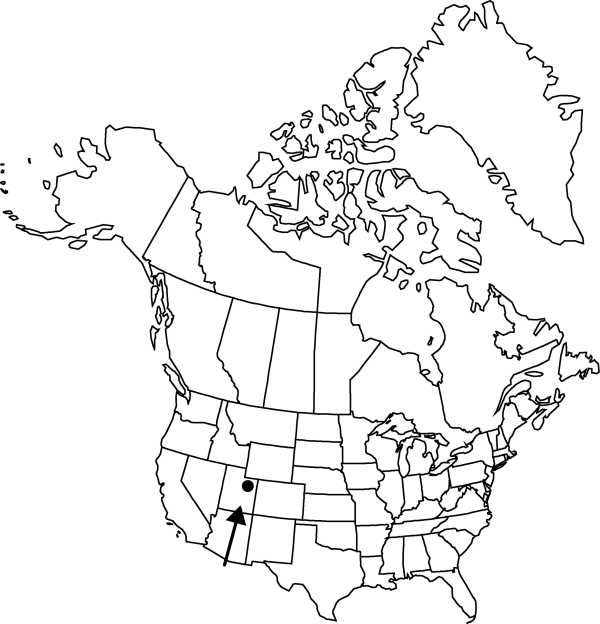Sclerocactus brevispinus
Haseltonia 2: 26. 1994.
Stems usually unbranched, green, depressed-spheric or elliptic to shortly cylindric, ovoid when young, 2.9–8.5(–10.4) × 1.8–7.5(–8) cm, somewhat glaucous; ribs usually 13, obscure to well developed, tubercles evident on ribs. Spines not obscuring stems; radial spines (5–)6–7(–13) per areole, acicular, elliptic or rhombic in cross section; central spines (0–)1(–3) per areole, abaxial central spine, if present, hooked or curving somewhat downward, straw colored to brown, highlighted purplish or reddish, hooked, porrect, terete or somewhat angled, 3–31(–39) × 0.5–1 mm; lateral central spines 0–2 per areole, erect, similar to abaxial but not curved, angled to flat, somewhat inconspicuous, triangular in cross section, 15–35 1–1.5 mm; adaxial central spines not differentiated. Flowers campanulate, 2–3(–4) × 1.1–3(–3.5) cm; outer tepals greenish to purple with brownish midstripes, pink, purple or whitish at margins, oblanceolate, 7–16 × 2–6(–7) mm, mucronate, marginally membranous and crisped or minutely toothed; inner tepals purple, sometimes suffused with brown, largest tepals oblanceolate, 10–22(–30) × 4–7 mm, mucronate, somewhat irregularly toothed; filaments white, tinged with pink to pink-purple; anthers yellow. Fruits irregularly dehiscent, green to tan, sometimes suffused with pink, shortly cylindric, 7–15 × 5–12 mm, dry; scales few, membranous, scarious-margined. Seeds (1.2–)1.8–2.7 × (1.9–)2.5–3.8 mm; cells convex but flattened apically.
Phenology: Flowering late Apr–May.
Habitat: Exposed clay hills, saltbush or sagebrush flats
Elevation: 1400-1500 m
Discussion
Of conservation concern.
The combination of spheric stems, short spines, and small pink flowers make Sclerocactus brevispinus easily identified. Morphologically, S. brevispinus is very similar to S. mesae-verdae. This similarity appears to be a case of convergent evolution. Phylogenetic analyses of chloroplast DNA sequences (J. M. Porter et al. 2000) support more recent common ancestry of S. brevispinus with S. whipplei, S. cloverae, S. glaucus, S. parviflorus, S. wetlandicus, and S. wrightiae than with S. mesae-verdae.
There is a well-documented cline of genetic mixing between Sclerocactus brevispinus and S. wetlandicus. An important natural threat to S. brevispinus is genetic swamping from the more widespread S. wetlandicus.
Sclerocactus brevispinus is considered to be conspecific with S. glaucus by the U.S. Fish and Wildlife Service, and is therefore protected with that threatened species.
Selected References
None.
